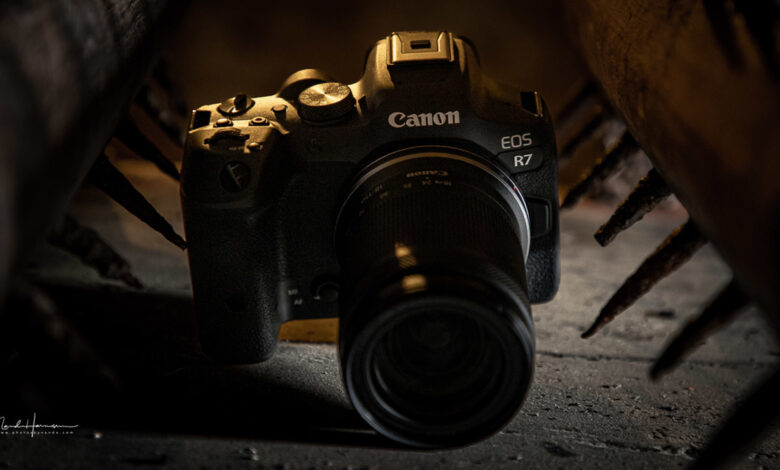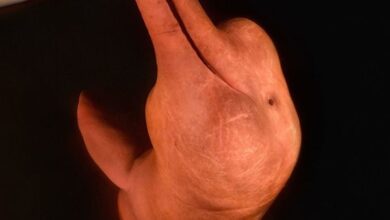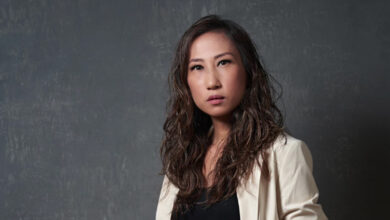Canon EOS R7 review: How does it work for general photography?

There are now two new Canon APS-C mirrorless cameras. There’s the EOS R10, a relatively simple camera, and there’s the EOS R7, a camera that promises a lot and delivers a lot as well. Canon Netherlands gave me this camera for a week while I was on vacation. These are my findings.
The Canon EOS R10 and the Canon EOS R7 are two new APS-C mirrorless cameras, but not the first from Canon. Before these cameras, the manufacturer produced the EOS M line of mirrorless cameras. Those are excellent cameras, although not the best in their class on the market. First, they lack an IBIS system and don’t offer top-of-the-line autofocus options.
With the EOS R10 and EOS R7, Canon not only brought APS-C into the RF system, it promised the excellent autofocus system they deliver in EOS R6, EOS R5and EOS R3 camera and for the EOS R7, the IBIS system.
Although the EOS M Series, like the affordable model, EOS M50 Mark II, are very capable cameras, the EOS R7 surpasses it in every possible way. Of course, the price is twice as high, but you get more than that.
When I was asked by Canon Netherlands for a review Canon EOS R7, I decided to go on vacation to Germany and Luxembourg. Nothing special, just a week of relaxation and sightseeing, villages, castles and ruins. The goal of this review is to see how the Canon EOS R7 performs as an everyday camera.
Details Canon EOS R7
The specifications are probably already well known. There’s a new 32.5 MP sensor that’s not stacked or backlit. That’s APS-C, of course, with a 1.6x crop and the camera incorporates an IBIS system up to 7 stops. It allows you to shoot continuously up to 15 fps with the mechanical shutter and 30 fps with the electronic shutter. If you want, a half-second pre-shot feature is available, which records up to 15 frames before you press the shutter-release button completely.
Features a Dual pixel CMOS AF II system, with 651 AF areas that can track human eyes, head and body, a variety of eyes, heads and animal bodies. And do not forget vehicles such as cars and motorbikes. Autofocus works up to -5 EV.
The EOS R7 measures just 132.0 x 90.4 x 91.7 mm and weighs about 612 grams, including SD card and battery. It’s smaller than the EOS R5 and EOS R6, and if you pair it with RF-S 18-150mm f / 3.5-6.3 IS STMyou still have a small and light camera to easily carry with you.
Despite its size and weight, the camera is well equipped with functions and buttons. It also has some new points: pairing joystick and a roller. This combination wheel and button is on the back, where you place your thumb when holding the camera. Next to that, you find the AF-ON button.
One innovation is the main switch, as it can be used to toggle between stills and movie recording. It is located on the right side of the camera, next to the PASM dial. If that’s a good option it’s up for discussion, as the dial that can be found in that spot on a full frame mirrorless camera has been lost.
A real improvement is the AF/MF switch on the front of the camera. I like this one, because it makes switching between AF and MF super easy.
The Canon EOS R7 accepts two UHS-II SD cards, uses a standard LP-E6NH battery, and has a full range of connections: micro-HDMI, remote control, USB-C, microphone and headset. It also has a multifunctional hot shoe.
The LCD screen perfectly matches and has 1,632 million pixels. The electronic viewfinder has 2.36 million dots, making it not the best viewfinder out there, but it’s not bad either. It has a maximum refresh rate of 120 fps and optical emulation, making the viewfinder as responsive as an optical viewfinder.
Menus and available functions
The camera integrates the well-designed and well-known menu system for which Canon is famous. It can be operated by touch screen or by buttons. It also allows you to customize a lot of buttons. The AF system is highly customizable, similar to that found on the flagship Canon R3.
Perhaps the most surprising thing is the creative options Canon offers inside the menu. These are the same creative options you find on lower-end consumer cameras and the aforementioned Canon EOS M50 Mark II. There are miniature effects, fisheye effects, toy cameras, etc. I find this a bit strange as you wouldn’t expect this on a camera like this.
You can disable these functions and not be required to use them, but they are clearly geared towards a JPEG photographer, who I don’t expect to use the full capabilities of this camera.
Shot with Canon EOS R7
I used the camera mainly for candid photography during our vacation. I limit myself to RF-S 18-150mm . Lens and wanted to find out how I like the camera for this type of use. I strap the camera on my belt with a carrying system designed for light and small cameras. It works pretty well and I really enjoy shooting with the Canon EOS R7.
One small issue I had was the newly designed wheel and joystick. My muscle memory was expecting the controls to be in a completely different place, and it took me a while on different occasions before I found the controls. It is of course a matter of time to get used to this design. But I can imagine how one uses the EOS R7 next to a EOS R6, EOS R5or EOS R3 may have some difficulty switching back and forth.
If you’re into action, the pre-shot option is a cool feature that can be found on other brands’ cameras. The pre-shot feature starts recording frames the moment you press the shutter-release button halfway. At the moment you fully press the shutter-release button, the frames recorded in the previous half-second will also be stored. This way you have up to 15 recorded photos before actually taking them.
Another cool feature is the automatic adjustment of the horizon level. Although I was skeptical at first, this option works great. When the horizon is titled, you’ll see the camera correct for a warped image in the viewfinder. Of course, this can also be fixed in post, but if it’s fixed during shooting, it saves a bit of post-processing time.
As far as the dynamic range and ISO performance of the new 32.5-megapixel sensor is concerned, as you might expect, it’s not on par with the full-frame sensor. It’s smaller, after all, and the signal-to-noise ratio is affected by that. While you can increase the ISO up to 51,200, I found the results to be acceptable up to ISO 3,200, as long as the exposure is correct.
Although I didn’t do any real ISO or dynamic range testing, I did manage to increase some of the shadows in a high dynamic range scene, as shown below in the before-after example. This image was taken at ISO 1600 and exposed for highlights. Raising the shadow during post-processing shows an increase in noise, which is to be expected. I took it to the extreme to find the limit. Adjusting the exposure 0.5 stops, setting highlights to -100 and raising shadows to +100 results in a noise level that works well for types and social media but is probably too much for large size print.
Filming with Canon EOS R7
Although I mainly use the Canon EOS R7 as a still camera, I did shoot some simple video footage at 1080p, 25fps, and CLOG3.
The video features are pretty good. You can go up to 4K 60fps with 7K oversampling, 1080p up to 120fps. Recordable in YCbCr 4:2:0 8-bit or YCbCr 4:2:2 10-bit when HDR PQ or CLOG3 is selected. There is no real write limit and no risk of overheating.
I haven’t tested these, because I haven’t used the Canon EOS R7 for video, except for some occasional recordings. But for this type of camera, it can be considered a great set of features.
What I think about Canon EOS R7
I took this camera with me on vacation to find out how it performs for this genre of photography. I used it to shoot inside villages, castles, and ruins. I took it with me when I was hiking through the countryside, and I photographed one of the birds of prey flying by. Carrying the camera on my belt works fine. It’s not too big or heavy for this.
With that said, I only use kit lenses, RF-S 18-150mm f / 3.5-6.3 IS STM, which I find to be a great lens for general photography. I am sure that the image quality will improve using the more expensive, much larger and heavier L-glass. But I don’t want to bring so many devices on my vacation. After all, it wasn’t a real photography trip.
Its features are sometimes comparable to a camera like the Canon EOS R3, and it’s faster than many of its full frame cousins. It’s fast, has a great AF system, has great video specs, and a nice newly designed joystick and wheel system. But if you think you’ve got a semi-professional APS-C mirrorless camera here, don’t be surprised if you’re faced with useful screens that refer to a beginner photographer or filters. Creative for JPEG photographers.
There is a problem I have when using Canon EOS R7. In many cases, the camera freezes completely. Even the main power switch doesn’t work anymore. The only way to get the camera working again is to remove the battery for a few seconds.
I recently discovered this is a well known problem. If the play button is pressed directly after taking a photo, this may happen. I would expect a firmware update to resolve this.

What I like
- 32.5 megapixel resolution
- Light and small, but with good ergonomics
- Combination of scroll wheel and joystick (though it takes some getting used to)
- Improved position for main switch
- 5-axis IBIS system, up to 7 stops
- Excellent AF tracking for humans, a wide range of animals and vehicles
- Dual card slots
- APS-C is ideal when a long focal length is required
- Good dynamic range
- Automatic horizon level adjustment
- Pre-shoot available
- Dedicated AF/MF switch
- Great filming options
What I don’t like
- Easily switch the camera to movie recording instead of still photography using the main power switch
- One of the dials is replaced by the main power switch
- The shutter makes more noise than the EOS R5 and EOS R6
- Micro-HDMI connection
- Creative installation feels out of place
I like the Canon EOS R7. It’s a great camera for a good price. If you’re looking for an alternative to the Canon EOS 7D Mark II, I think you’ll love the EOS R7.
Also, if you’re looking to upgrade from a Canon EOS M Series camera, this one will be a great fit. You get access to all the great new RF lenses and that’s a big plus. But the much better AF system is probably the biggest benefit over the EOS M Series.
I would like to thank Canon Netherlands for providing the camera for this review.
What do you think about Canon EOS R7? Please let me know in the comments section below.






